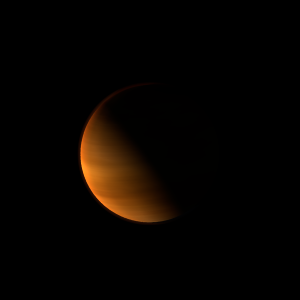|
|
Space Astro
|
Info for exoplanet "Sahyr-turjot"
| Scientific (actual) data |
|---|
| Name | HAT-P-13 c |
| Planet status | Confirmed |
| Mass sini | 14.28 |
| Orbital period | 446.27 |
| Semi major axis | 1.186 |
| Orbit eccentricity | 0.6616 |
| Angular distance | 0.005542 |
| Discovered | 2009 |
| Updated | 2014-08-22 |
| Omega | 175.29 |
| Tperi | 2454890 |
| Tconj | 2455310 |
| Publication | Published in a refereed paper |
| Detection type | Radial Velocity |
| Star name | HAT-P-13 |
| Right ascension | 129.88° |
| Declination | 47.35° |
| Mag v | 10.62 |
| Star distance | 214 |
| Star metallicity | 0.43 |
| Star mass | 1.22 |
| Star radius | 1.56 |
| Star sp type | G4 |
| Star age | 5 |
| Star temperature | 5638 |
| Wikipedia article | HAT-P-13 c |
Back
| |
| Fictional info (?) |
|---|
| Suggested name | Sahyr-turjot |
| Planet type | Cold planet |
| Its orbital period around HAT-P-13 of 450 earth days is the shortest of all the planets in its solar system.
It was the one of the first exoplanets visited by a spacecraft, and one of the first to be successfully landed on. |
| Atmosphere | Nitric oxide | 44% |
| Krypton | 24% |
| Helium | 11% |
| Nitrogen | 9.9% |
| Methane | 8.7% |
| Hydrogen peroxide | 0.86% |
| Carbon dioxide | 0.55% |
| Carbon monoxide | 6.0E-6% |
| Ammonia | 3.0E-6% |
| Atmospheric pressure | 40 bar |
 |
| No known satellites |
| Google search for Sahyr-turjot |
|
Website by Joachim Michaelis
|
|
|
|